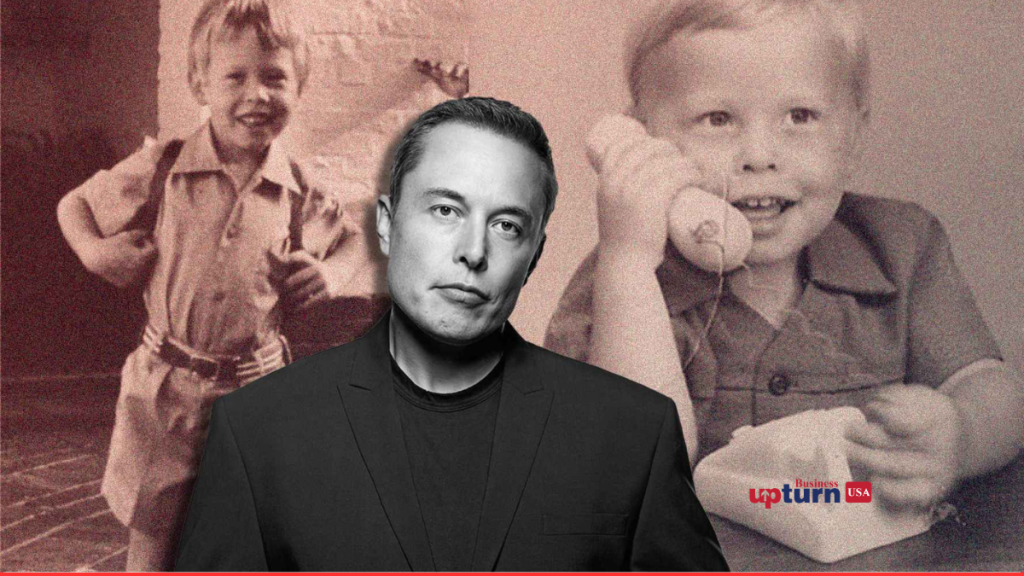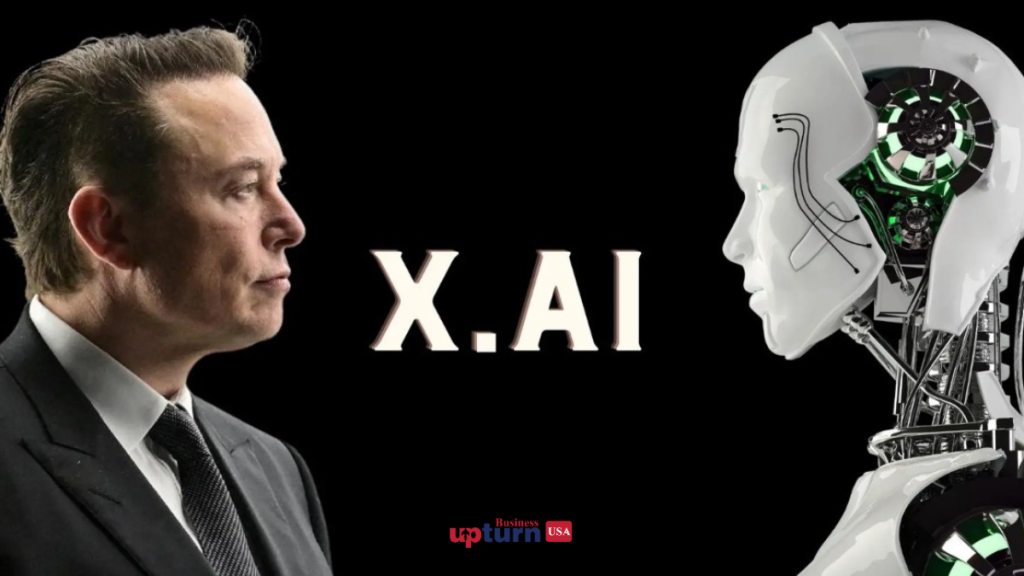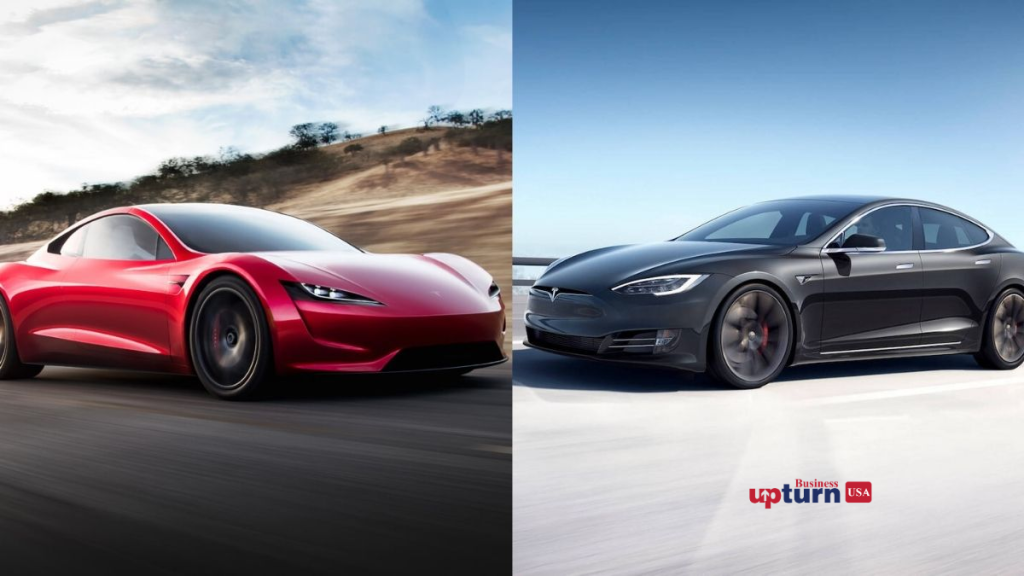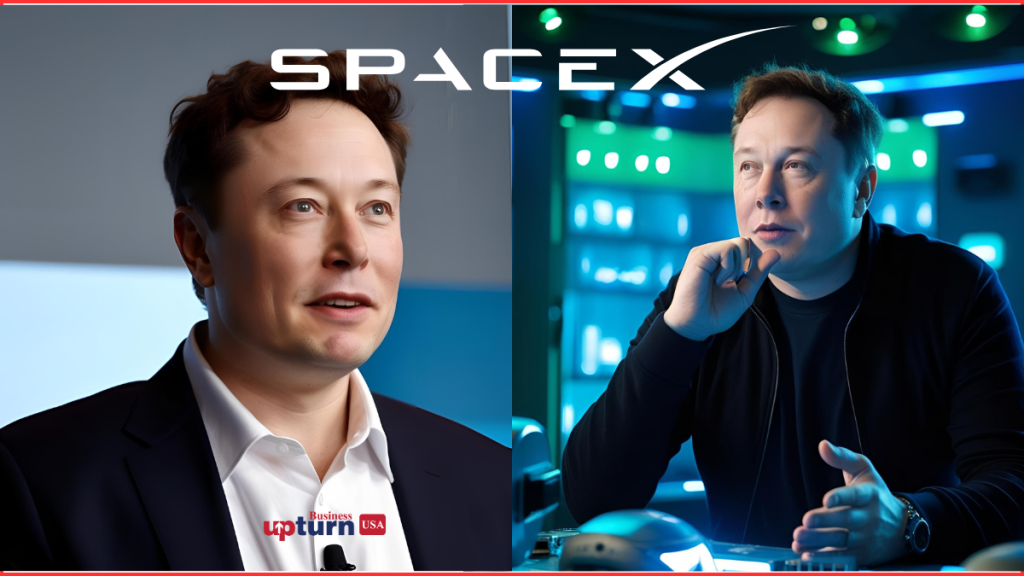 credit- AI
credit- AI
Advertisement
Elon Musk is one of the most influential and controversial figures in modern history. A billionaire entrepreneur, inventor, and business magnate, Musk has revolutionized multiple industries, from electric vehicles to space travel and artificial intelligence. His relentless ambition and risk-taking mindset have made him a household name, often compared to great innovators like Thomas Edison and Steve Jobs.
This detailed biography explores Musk’s life, achievements, failures, and vision for the future.
Early Life and Education of Elon Musk
Elon Reeve Musk was born in Pretoria, South Africa, on June 28, 1971. His early years were marked by curiosity, intellect, and a passion for technology that would later shape his future as one of the world’s most influential entrepreneurs. Musk’s upbringing was unique, filled with challenges, but also opportunities that laid the foundation for his success.
A Curious Mind from Childhood
From an early age, Musk displayed an intense curiosity and an exceptional ability to grasp complex concepts. Unlike other children his age, he was deeply fascinated by books, computers, and science fiction. His love for reading was unparalleled—he often spent hours absorbed in encyclopedias and science fiction novels. Musk once said:
“I was raised by books. Books and then my parents.”
This deep intellectual curiosity made him different from his peers, often leaving him feeling isolated. He was a quiet child, preferring the company of books over social interactions. He particularly admired Isaac Asimov’s science fiction works, which shaped his vision of the future and reinforced his belief in the importance of advancing technology for humanity’s survival.

Childhood Challenges and Family Background of Elon Musk
Elon Musk was the eldest of three children. His father, Errol Musk, was a South African engineer, while his mother, Maye Musk, was a Canadian model and dietitian. While Maye worked hard to provide for the family, Errol’s engineering background influenced Musk’s early interest in mechanics and problem-solving.
However, Musk’s childhood was not entirely smooth. He has described his relationship with his father as difficult and has openly spoken about his troubled upbringing. In interviews, he revealed that his father was emotionally abusive, and their strained relationship pushed him to focus more on learning and escaping into his world of books and technology.
Adding to these struggles, Musk was also severely bullied at school. He attended Waterkloof House Preparatory School and later Pretoria Boys High School, where he often found himself the target of physical and verbal abuse. In one incident, a group of bullies beat him so badly that he was hospitalized. Despite these hardships, Musk never let adversity define him. Instead, he used his struggles as motivation to push forward.
Discovering Computers and Programming
One of the most significant turning points in Musk’s early life was his discovery of computers and programming. At just 10 years old, he got his first Commodore VIC-20, a basic home computer. He became obsessed with understanding how it worked and taught himself programming.
By the time he was 12 years old, Musk had created his first video game, Blastar, a simple space shooter. He sold the game’s code to a magazine called PC and Office Technology for $500, marking his first step into the tech world.
This early achievement was a clear indication of Musk’s natural talent for technology and entrepreneurship. While other kids were playing video games, Musk was designing them—a sign of his exceptional intelligence and ambition.
Leaving South Africa for a Brighter Future
By the late 1980s, Musk knew that South Africa was not the ideal place for someone with his ambitions. He was deeply influenced by American innovation and entrepreneurship, particularly in Silicon Valley. However, he also wanted to escape the compulsory South African military service during the apartheid era, which he strongly opposed.
At 17 years old, Musk took a bold step and moved to Canada in 1989. His mother was Canadian, which allowed him to obtain citizenship. He enrolled at Queen’s University in Kingston, Ontario, where he began his higher education journey.
Higher Education at the University of Pennsylvania
After two years at Queen’s University, Musk transferred to the University of Pennsylvania (UPenn), where he pursued two degrees simultaneously—one in Physics and another in Economics from the Wharton School. He was fascinated by the laws of physics, believing that understanding the universe’s fundamental principles would help him create groundbreaking technologies.
During his time at UPenn, Musk demonstrated his entrepreneurial mindset. He and a friend rented a house and turned it into a nightclub to make extra money, charging students an entrance fee. This hustle was an early example of Musk’s business acumen and willingness to think outside the box.
A Short Stint at Stanford and the Birth of an Entrepreneur
In 1995, after graduating from UPenn, Musk enrolled in a Ph.D. program at Stanford University to study applied physics and materials science. However, he dropped out after just two days upon realizing that the internet was booming and offered better opportunities. Instead of continuing academia, Musk decided to pursue entrepreneurship, marking the beginning of his journey toward building some of the most revolutionary companies in the world.
Entrepreneurial Beginnings for Musk: Zip2 and X.com
Elon Musk’s entrepreneurial journey began in the mid-1990s when the internet was still in its infancy. With an ambitious vision and a deep belief in the potential of online businesses, Musk co-founded Zip2, an online business directory, and later launched X.com, a pioneering fintech company that evolved into PayPal. These early ventures laid the foundation for his future success, proving his risk-taking mindset and ability to disrupt industries.
Zip2: Elon Musk’s First Startup
In 1995, after dropping out of Stanford University just two days into his Ph.D. program, Elon Musk decided to enter the rapidly growing tech industry. With his younger brother, Kimbal Musk, he co-founded Zip2, a company that provided online business directories combined with mapping and navigation services. The idea was to help newspapers and businesses digitally list their services, much like an early version of Google Maps or Yelp.
Challenges in the Early Days
Musk and his brother faced significant financial struggles in the beginning. They couldn’t afford rent and lived in their small office, showering at a local YMCA. Musk once recalled:
“My brother and I literally lived in the office and slept on a couch. We showered at the YMCA, and we were so hard up that we only had one computer.”
Despite these hardships, they worked tirelessly, coding software and pitching their idea to businesses. Musk’s role was primarily technical, focusing on the product, while his brother handled business operations.
Success and Acquisition by Compaq
Zip2 gained traction as more newspapers and businesses adopted its services. By 1999, it was generating millions in revenue, attracting the attention of major tech companies. That year, Compaq acquired Zip2 for $307 million, making it one of the largest internet acquisitions at the time. Musk personally earned $22 million from the sale, giving him the capital to pursue even bigger ambitions.
Watch: Elon Musk Talks About Zip2’s Early Days (YouTube)

X.com: The Birth of Online Banking
Flush with cash from Zip2’s sale, Musk quickly moved on to his next venture—X.com, an online financial services company. He founded it in March 1999, recognizing that the traditional banking system was outdated and ripe for disruption.
At a time when online payments were still a new and risky concept, Musk envisioned X.com as a digital bank that would allow users to send money via email, manage accounts, and even invest in financial products.
Risk-Taking and Innovation
Musk’s approach was revolutionary. He believed the future of money was digital transactions, an idea that was highly controversial at the time. He once said:
“Money is just an entry in a database. It doesn’t need to be physical.”
However, X.com faced skepticism from banks and regulators. Despite this, Musk remained relentless, using his technical expertise to build a secure and user-friendly online payment platform.
Merger with confinity and the birth of PayPal
In 2000, X.com merged with Confinity, a competing company co-founded by Peter Thiel and Max Levchin, which had developed a popular money-transfer service. This merger led to the birth of PayPal, a name chosen for its ease of recognition.
Under Musk’s leadership, PayPal became the dominant force in online payments, outcompeting traditional financial institutions. However, in 2000, Musk was ousted as CEO due to internal disagreements over the company’s technology infrastructure.
Despite this setback, PayPal was acquired by eBay for $1.5 billion in 2002, and Musk walked away with $180 million, setting the stage for his next big ventures—Tesla, SpaceX, and beyond.
- Watch: incredible story of PayPal (YouTube)
Revolutionizing the automotive industry: Tesla
Elon Musk’s impact on the automotive industry has been nothing short of revolutionary. Through Tesla, Inc., he has transformed the way people perceive electric vehicles (EVs), proving that they can be both sustainable and high-performance. From being a niche player to becoming the world’s most valuable car manufacturer, Tesla has changed the game for the automobile industry.
Tesla’s Early Days and Musk’s Involvement
Tesla Motors was founded in 2003 by Martin Eberhard and Marc Tarpenning, with the goal of creating high-performance electric vehicles. However, the company struggled with funding, and in 2004, Elon Musk joined as a major investor, contributing $6.5 million and becoming Chairman of the Board.
Musk played a crucial role in shaping Tesla’s vision, focusing on making EVs mainstream. Despite internal conflicts, Musk took over as CEO in 2008, leading Tesla into a new era.
“Tesla’s mission is to accelerate the world’s transition to sustainable energy.” – Elon Musk
Breaking Barriers: Tesla Roadster and Model S
Tesla’s first car, the Tesla Roadster (2008), was a sports car powered entirely by electricity. It proved that EVs could be powerful, with a range of over 200 miles per charge, something unheard of at the time. However, its high price limited its market reach.
The real breakthrough came in 2012 with the launch of the Model S, a luxury electric sedan that redefined expectations. The Model S featured:
-
Unmatched Performance – The P100D version could go from 0-60 mph in under 2.3 seconds.
-
Long-Range Battery – A 400-mile range on a single charge.
-
Autopilot System – Tesla introduced self-driving capabilities, making it a pioneer in autonomous driving.
“The best way to predict the future is to create it.” – Elon Musk
The Model S won several awards, including MotorTrend’s Car of the Year, and firmly established Tesla as a leader in the EV industry.

Mass Market Success: Model 3 and Model Y
Tesla’s mission was not just to build luxury EVs but to make electric cars affordable for the masses. This vision came true with the launch of the Model 3 in 2017, starting at $35,000.
-
Most-Sold EV – The Model 3 became the best-selling electric car globally, with over 1.5 million units sold.
-
Supercharger Network – Tesla expanded its fast-charging network, making EV ownership convenient.
The Model Y, an electric SUV based on the Model 3 platform, followed in 2020, further increasing Tesla’s dominance.
- Watch Tesla’s official journey on YouTube: Tesla Official YouTube
Tesla’s Innovation: Autopilot and Full Self-Driving (FSD)
Tesla has been at the forefront of autonomous driving technology. Its Autopilot system enables features like:
-
Lane Keeping and Automatic Steering
-
Adaptive Cruise Control
-
Navigate on Autopilot – Fully automated highway driving
Tesla’s Full Self-Driving (FSD) technology is constantly evolving, with Musk claiming it will eventually achieve 100% autonomy.
“Self-driving cars will become normal. In the future, having a non-autonomous car will be like owning a horse.” – Elon Musk
The Future of Tesla: Cybertruck, Roadster 2.0, and Robotaxis
Tesla is not stopping at just cars. The company is working on:
-
Cybertruck – A futuristic electric pickup truck with an exoskeleton body.
-
New Roadster – A supercar capable of 0-60 mph in 1.9 seconds.
-
Robotaxis – Fully autonomous Tesla taxis, aiming to disrupt the ride-hailing industry.
Musk’s ultimate vision is to eliminate gasoline cars entirely and create a sustainable future powered by clean energy.
- Watch: How Elon Musk Built Tesla (YouTube)
Space Exploration: The Rise of SpaceX
Musk founded SpaceX (Space Exploration Technologies Corp.) in 2002 with the goal of reducing space travel costs and colonizing Mars. SpaceX achieved several milestones, including:
-
2008: Falcon 1 became the first privately developed rocket to reach orbit.
-
2012: Dragon spacecraft delivered cargo to the International Space Station (ISS).
-
2020: SpaceX’s Crew Dragon launched NASA astronauts to the ISS, marking the first commercial crewed spaceflight.
-
2023: Starship, the most powerful rocket ever built, underwent its first test flights.
Musk’s ultimate goal is to establish a self-sustaining colony on Mars, believing that humanity must become a multiplanetary species to ensure survival.

The Boring Company, Neuralink, and AI
Elon Musk is not just about Tesla and SpaceX—his ambitions extend beyond cars and space travel. His ventures, The Boring Company, Neuralink, and Artificial Intelligence (AI), aim to transform urban transportation, human-computer interaction, and the future of AI. These projects showcase Musk’s relentless pursuit of cutting-edge technology and his vision for the future of humanity.
The Boring Company: Revolutionizing Urban Transportation
Elon Musk founded The Boring Company (TBC) in 2016 to address urban traffic congestion by developing underground tunnel systems for high-speed transportation. The idea was born out of Musk’s frustration with Los Angeles traffic. He tweeted:
“Traffic is driving me nuts. Am going to build a tunnel boring machine and just start digging…”
Shortly after, he did exactly that. The Boring Company aims to create underground tunnels that transport vehicles and passengers at high speeds using autonomous electric skates or Hyperloop technology.
Key Achievements of The Boring Company
- Las Vegas Loop: A 1.7-mile underground tunnel beneath the Las Vegas Convention Center (LVCC) that uses Tesla vehicles to transport passengers. Plans are underway to expand it to cover the entire city.
- Hawthorne Test Tunnel: A prototype tunnel built under SpaceX headquarters in California, demonstrating the feasibility of underground transport.
- Future Expansion Plans: Proposed tunnel projects in cities like Miami, Austin, and Fort Lauderdale.
Musk envisions a world where traffic congestion is eliminated, and underground tunnels become a fast, cost-effective transportation solution.
Neuralink: Merging the Human Brain with AI
Founded in 2016, Neuralink is one of Musk’s most futuristic projects. Its mission is to develop brain-machine interfaces (BMIs) that allow humans to control computers and devices using their minds. Musk believes Neuralink could help humans keep up with artificial intelligence, stating:
“If you can’t beat AI, join it.”
Neuralink’s brain chip technology is designed to help people with neurological disorders such as paralysis, blindness, and speech impairments. The device, a small implant known as the Link, is placed in the brain through robotic surgery.
Neuralink’s Breakthroughs
- First Human Trials: In 2024, Neuralink successfully implanted its first brain chip in a human, allowing them to control a computer with their thoughts.
- Monkey MindPong: Neuralink demonstrated a monkey playing Pong using only its mind, proving the technology’s potential.
- Medical Applications: The technology could restore mobility, vision, and communication for individuals with disabilities.
Watch: Neuralink’s First Human Trials Announcement- Official YouTube Link
Musk’s ultimate goal is to achieve “symbiosis with AI,” enabling humans to interface directly with computers and even download and upload thoughts.
Artificial Intelligence: OpenAI and xAI
Elon Musk has been at the forefront of Artificial Intelligence (AI) development, both as a proponent and a critic. His involvement in AI spans two major companies—OpenAI, which he co-founded in 2015, and xAI, his latest venture launched in 2023. While OpenAI is known for developing ChatGPT and DALL·E, Musk’s xAI aims to create truth-seeking AI that competes with tech giants like Google and Microsoft.
Musk has long warned about the potential risks of AI, stating:
“AI is far more dangerous than nukes. So why do we have no regulatory oversight?”
Despite these concerns, he remains committed to ensuring AI is developed responsibly. Let’s dive deeper into how OpenAI and xAI reflect Musk’s vision for the future of AI.
OpenAI: The Birth of AI for Humanity
Founding and Early Goals
In December 2015, Elon Musk co-founded OpenAI with Sam Altman, Greg Brockman, and other researchers. The mission was simple yet ambitious:
- Develop artificial general intelligence (AGI) that benefits humanity
- Ensure AI remains open-source and accessible
- Prevent AI from being controlled by profit-driven corporations
Musk initially invested $50 million into OpenAI, envisioning it as a nonprofit organization dedicated to ethical AI development. However, things took a different turn over the years.
ChatGPT, DALL·E, and Breakthroughs
Under OpenAI, several groundbreaking AI models were developed:
-
GPT-3 (2020) and GPT-4 (2023) – The most powerful language models ever created, capable of human-like conversation and content creation.
-
DALL·E – AI that generates realistic images from text prompts.
-
Codex – AI that helps write and debug computer code.
In November 2022, OpenAI launched ChatGPT, which became an instant sensation, attracting over 100 million users in just two months. This cemented OpenAI’s dominance in the AI landscape.
- Watch: OpenAI’s Official YouTube Video on ChatGPT Official YouTube link
Elon Musk’s Exit and Criticism
In 2018, Musk left OpenAI, citing disagreements over its direction. OpenAI had transitioned into a for-profit entity, receiving billions in funding from Microsoft. Musk criticized this move, stating:
“OpenAI was meant to be open-source. Now it’s a closed-source, profit-driven monopoly aligned with Microsoft.”
He later accused OpenAI of prioritizing commercial success over its original mission to benefit humanity. This frustration led him to create a rival AI company—xAI.
xAI: Elon Musk’s Answer to AI’s Future
Launch of xAI
On July 12, 2023, Musk officially announced xAI, positioning it as a competitor to OpenAI, Google’s DeepMind, and Meta’s AI initiatives. According to Musk, xAI aims to develop “truth-seeking AI” that is aligned with human interests.
Unlike OpenAI, xAI does not have corporate affiliations with big tech companies, making it more independent in its AI development. Musk believes that AI should not be manipulated for profit or political agendas.
Grok: xAI’s AI Chatbot
In November 2023, xAI launched Grok, an AI chatbot integrated into X (formerly Twitter). Grok stands out due to:
- Access to real-time data from Twitter, unlike ChatGPT, which relies on older datasets.
- A rebellious, sarcastic personality making it more engaging.
- Open-source development, keeping AI transparent.
Musk claims Grok will be “the best AI assistant ever”, designed to provide accurate, uncensored information.
xAI’s Vision for the Future
Musk has bold ambitions for xAI, including:
-
Developing Artificial General Intelligence (AGI) that truly understands the world.
-
Making AI systems more transparent and less biased.
-
Ensuring AI helps human civilization rather than replacing it.
Despite challenges, Musk remains optimistic about AI’s potential, stating:
“I think AI will be smarter than any human by 2029. We must ensure it’s aligned with our values.”
Twitter Takeover and Social Media Influence
Elon Musk’s acquisition of Twitter (now X) was one of the most controversial corporate takeovers in history. In October 2022, he finalized the purchase of Twitter for $44 billion, fundamentally changing the platform’s direction. His vision of turning Twitter into an “everything app” has sparked debates on free speech, content moderation, and digital transformation.
This section explores Musk’s motivations, the impact of his takeover, and how his social media presence shapes global conversations.
Why Did Elon Musk Buy Twitter?
Musk, a frequent Twitter user with millions of followers, had long been vocal about his concerns regarding free speech and censorship on the platform. In early 2022, he began buying Twitter shares, eventually becoming the largest stakeholder with a 9.2% share in April. He then offered to buy the entire company, stating:
“Twitter is the digital town square where matters vital to the future of humanity are debated.”
Musk’s core reasons for acquiring Twitter included:
- Free Speech Advocacy – He criticized Twitter’s moderation policies, arguing that they stifled open discussion.
- Combatting Bots and Fake Accounts – Musk aimed to eliminate spam bots and promote authentic user engagement.
- Turning Twitter into a Super App – Inspired by China’s WeChat, Musk envisioned Twitter evolving into an “everything app” offering payments, video, and AI-powered features.
After months of legal battles, Musk completed the acquisition on October 27, 2022, posting a now-iconic tweet:
“The bird is freed.”
- Watch: Musk’s Twitter Takeover Explained (YouTube)
Elon Musk’s Influence on Social Media
Elon Musk is one of the most powerful social media influencers, with over 170 million followers on X. His tweets move stock markets, impact cryptocurrencies, and shape global conversations.
- In 2021, a single tweet—”Doge”—sent Dogecoin’s price surging by 50%.
- His tweet, “Tesla stock price is too high imo,” led to a $14 billion drop in Tesla’s market value.
- Musk’s memes and humorous posts often go viral, showcasing his ability to engage audiences.
Despite controversies, Musk’s direct communication style makes him one of the most followed and influential figures on social media.
- Follow Elon Musk on X: @elonmusk
The Legacy of Elon Musk
Elon Musk’s journey is a testament to innovation, resilience, and visionary thinking. From revolutionizing electric vehicles to pushing the limits of space travel, Musk continues to redefine industries. While his controversial leadership style draws criticism, his impact on technology and humanity is undeniable.
As he pursues ambitious goals like AI integration, Mars colonization, and high-speed transportation, the world watches to see what he will accomplish next.
